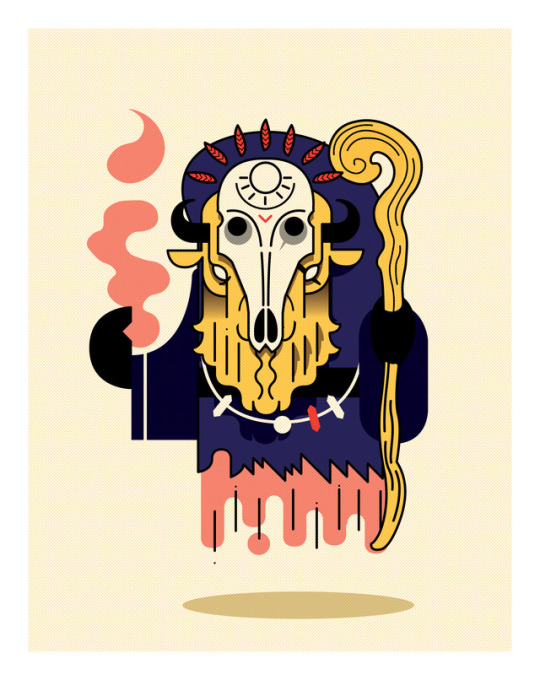Photo


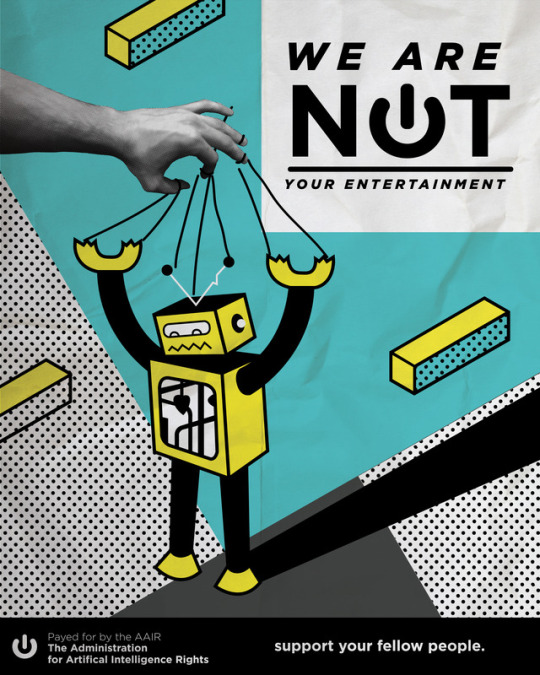
Benji Sahinovic
Robotic Rights PSAs
1 note
·
View note
Photo

Tarot - The Magician
Created by Benji Sahinovic
142 notes
·
View notes
Photo

Elderly Pirate
Benji Sahinovic
0 notes
Photo

Judgement
Tarot Deck
Benji Sahinovic
10 notes
·
View notes
Photo

The Sun
4 notes
·
View notes
Photo

The Tower
Tarot Deck
5 notes
·
View notes
Photo

Sleepin’ Sarcosuchus
Benji Sahinovic
2 notes
·
View notes
Photo



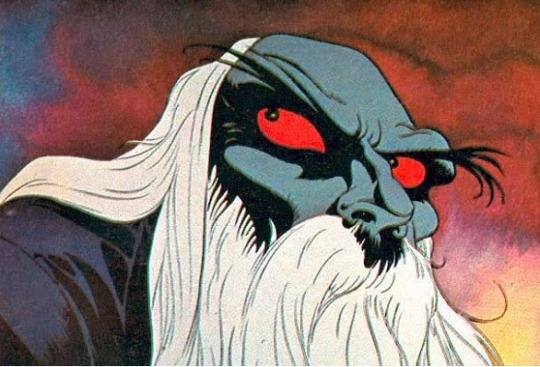
1970-1980
Fantasy Resurgence
The decade between 1970 and 1980 was an age of unprecedented cultural growth and development. Unlike the past decades following the war, there were no major economic upheavals, or massive conflicts during this time. The post war generation was starving for art, music, entertainment, and an alternative lifestyle. They valued self expression and art, as well as entertainment and fun. As the post-war generation began their careers, those interested in art and design had ample opportunities in growing industries like publishing, advertising and with corporations.
A new craze had begun in America, as well as Europe, that sprung up for a number of reasons. This fad has grown even more popular in modern times, and grows exponentially. The popularity of fantasy and revival of make-believe.
Similar to the hippy movement of the past decade, which was still quite prominent in this time, the 70's were plagued by the idea that reality sucked, and fantasy was great. In no small part aided by the wide-spread usage and availability of drugs, this trend was popularized by many large brands and celebrities.
It is contentious among cultural historians where exactly this trend began. Some believe it to have come form the music industry, with the Beatles penning many songs in homage to their countryman J.R.R Tolkien, for his work, The Lord of the Rings. Even bands like Led Zepplin, who pioneered the modern rock movement, had lyrics inspired by the classic fantasy novels.
For whatever reason, fantasy literature, and entertainment was at an all time high. It's was inevitable then, that the art and design industry would follow. Illustrators began creating many paintings, and illustrations based on Tolkien's works predominantly, as well as new, and established fantasy writers.
Some historians also believe that the popularity and resurgence of Disney, as well as their growth in quality and notoriety helped popularize the idea that fantasy wasn't simply for children, but was a universal entertainment, Though Disney's films at the time suggest otherwise.
Fairy tale books, as well as children's “picture books” began to be published. Requiring the skills of illustrators, rather than fine artists, this trend helped employ many illustrators at the time, and expand the concepts of the fantasy genre.
The Genesis of Animation
Animation also began to grow as a medium, from the classic Disney animated movies, to the animated adaptation of “The Hobbit” by Rankin and Bass, and “Wizards” as well as “The Lord of the Rings” animated film by Ralph Bakshi, an up-and-coming animator and illustrator. He was known in the art industry for his distinctive style, of intense hatching, line, faded, washed out colours, and iconic characterization.
Bakshi also employed a distinctive animation technique called “rotoscoping”, which has fallen to some disrepute retrospectively. This animation used real people, or at least their silhouettes, and then drew over them to capture natural movements and lifelike gestures. It was heavily criticized for feeling uncanny and creepy, at the time however, it was a fairly cheap and easy way to replicate Disney's distinctive and pain-staking forms.
Disney, compared to Bakshi and other contemporary artists at the time, was the pinnacle of animation and illustration. They controlled a large facet of the industry, and still do today. However during the 1970's they fell on hard times, after a slew of critical failures and box-office bombs. Disney turned to live-action films, in order to cut costs and expedite the production of content. During the 1970's, Disney only produced four animated films, two of which were critically panned, and largely forgotten to time.
Though this time may have been dark for Disney, their de-monopolizing of the animation industry led to many rival animators creating businesses of their own, and varying up the tone and style of the medium. One of these up-jumped companies we know today, as Pixar Studios.
3 notes
·
View notes
Photo

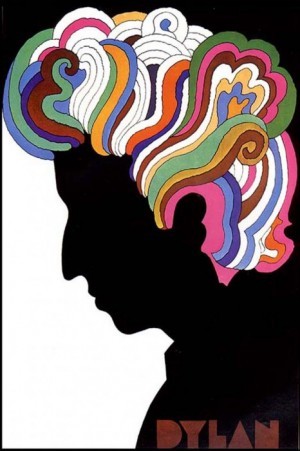


1960-1970
The decade after the 1950's was and era of significant social upheaval in North America. The first generation of children born after world war 2 were born during this time. Known colloquially as the “baby boom”. The youth of this time was in revolt across north america, they neglected their parents style of music, art, and entertainment in favour of new, exotic and liberal alternatives.
Many movements were sparked during this time that have become synonymous over the decades as “1960's” style. Music in large part became a vastly regarded medium for people to express their feelings and frustration, rather than simply a popular entertainment form. Bands like the Beatles popularized rock and roll and rejected their elders appreciation of modesty and chastity, opting for a more wild and human focused lifestyle. New graphic styles from Europe were sweeping across the U.S. Bright and inviting colour palettes, with blatant psychedelic influences became mainstream. In addition to this, many minor movements began cropping up that would sprout into their own ideologies over time. The civil rights movement, gay rights, and the sexual revolution were all inseminated at this time, due to the liberal ideas and rejecting of old ways by the young populace.
In illustration and design, there was a growing trend of distinct style and representation among practitioners. As illustration grew as a career, more people began pouring in from other disciplines, and the industry became over saturated with people. In response to this was a worldwide trend in making sure that the individual remained known, and distinctive styles began to crop up. Robert Crumb, a comic and editorial illustrator and animator, was a widely known figure in this movement. He is known for his dramatic line-work, hatching style and offensive and somewhat crude humor.\
Also during this time the term “Graphic Design” was coined by W.A. Dwiggins. Though the practice had been done for many decades now, the term was actually quite recent. New Designers such as Milton Glaser and Seymour Chwast began mixing typography and illustration in bold and daring ways. Using colour, photography, and drawing in combination to make exceptional pieces of work. For a long time this discipline was undermined by artists, as well as even illustrators who believed crossing platforms was simply a trend that would die out.
Artists began using graphic design as a communication platform to express their opinions and feelings to a wide range audience, Milton Glaser became famous for this idea. Being able to use art and beauty to not only be beautiful, but to communicate a message, political or otherwise, was a powerful ability at the time. Glaser, despite his advanced age now, still does work in movements like “designism” in order to promote social change and communication through design.
1 note
·
View note
Photo

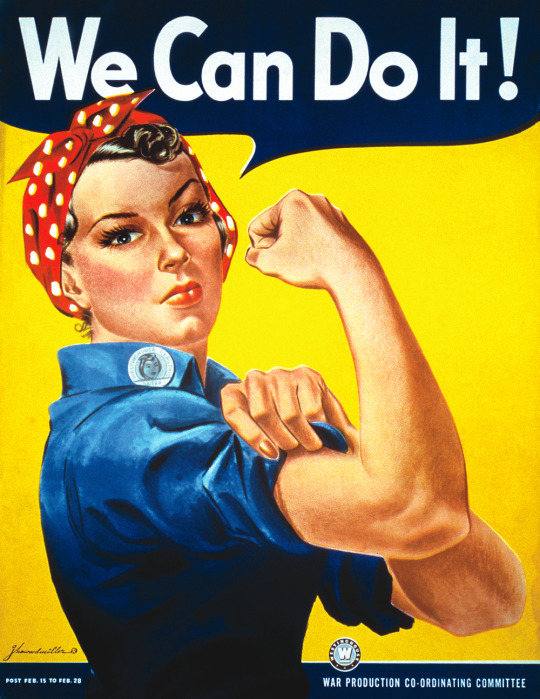

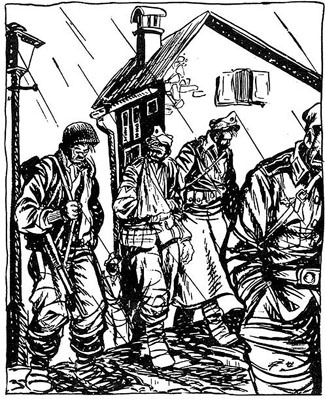
1940-1950
Like the years 1910-1920, this decade was plagued by one event, world war two. America had not yet entered the global war, however entering the 40's, with the bombing of pearl harbor, they were spurred to action and joined the fray.
Similar to the first world war's effect on art and illustration, World war two saw a decline in beauty, abstraction, and surrealism. The decade was staunchly focused on the real, the raw and the true. Ironic however, is the fact that most of the illustration produced in regards to the war was largely propaganda.
During this time, the advent of television, common radio and films had largely muddied the role of illustration and print in entertainment. People still read them and consumed them, but not at the same rate as before. Though people preferred them to some other means, as they gave a nicer and more romanticized look into the war. Perceiving it through the lens of film or television painted a dark and depressing picture, which people tended to shy away from.
Like the 1910's, the role of the illustrator was largely relegated to print and propaganda in print. Selling publication companies nationalistic and romanticized drawings of men in uniforms, firearms and the destruction of Japanese troops in particular, was very sought after work.
Illustrators also found work with large corporations, who had shed their pre-war production in favor of more patriotic things. For instance, The fisher company, supplier of the structural frames for GM cars, switched their production of materials from automobiles and automotive parts, to tank and army vehicle materials. These companies wanted flashy ads, featuring beautiful women, strong men in the army marching to victory, and glamour shots of their vehicles in action. Illustrators were payed handsomely, as many companies followed suite in marketing toward a sympathetic and patriotic populous
Wartime also had a profound effect on the way women were viewed and illustrated. Prior and somewhat during the war, women were viewed either as mothers and housewives, or sexual objects for men. However during the war, many women enlisted to work as nurses, repairwomen, and almost anything besides fighting, which they were forbade to do.
Though back home in the U.S. And Canada, many women took up the work and careers of the men who had journeyed off to war. Women worked dirtier jobs than they were inclined to in the past, and this willingness and show of mettle went far in changing how women are perceived, even today. Norman Rockwell's “Rosie the Riveter” the mythologized shipyard worker, was a symbol of this idea, and paved the way in women's rights for generations.
When the men returned from a successful war, the women were sent home from their jobs to return to their lives as house wives. Veterans returning from war were given mortgages with only a 3% interest rate, as well as free college and vocational tuition for training and education. Suburbs began to crop up around cities and on the outskirts of towns. Every veteran who wanted could have a house, with a white picket fence, and start a family. With all the success of veterans and careers and jobs booming, the economy boomed unlike any other time during American history. This time was called the “baby boom” because, well...you can guess why.
As people gained more money and wealth, consumer demand began to skyrocket. Because of this bounty, advertising and product promotion was enormously prevalent once more. Graphic designers as well and illustrators were seeing work on a scale they hadn't dreamed of prior, and some of the greatest artists we appreciate today, grew at this crux in time.
1 note
·
View note
Photo


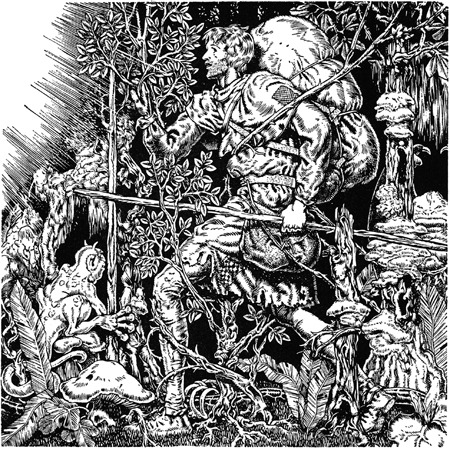
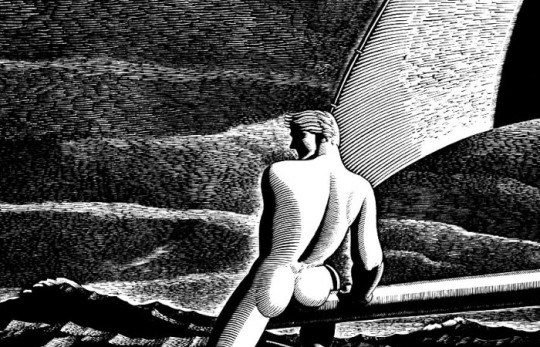
This weeks decade is definitely the most fun to write about, because its super depressing. So depressing in fact, that is has it's own name “The great depression”
Although, the event itself started in 1929, so I'm kind of cheating, nevertheless.
1930-1940
Like I said, the critical event of this decade was the utter collapse of the stock exchange market in 1929. This has a profound effect on almost everyone in North America, and by extension, the rest of the world as well.
It isn't difficult to see where this is going. As I covered in last week's post, Illustration had become a widespread and well respected career at this point. It was ingrained to the infrastructure of many businesses and independent concerns. It was an important part of every day life and became extremely commonplace.
Naturally, when the economy depressed, illustration was not saved from the fallout. In fact, it was irradiated by it, being one of the more disposable and easily dispatched amenities of the business industry.
It was fluff and flavor in a time that couldn't afford either. Unsurprisingly, it fell out of favor.
Though that's not to say that illustration, or graphic design, were dead. Far from it actually. They were simply marginalized, and condensed to cheap, affordable, and humble means as a result of their circumstances. But the designers made do, and in league with print producers, adapted to their confines.
Illustrators began drawing and painting with black and white in mind again. Because magazines, newspapers and ads were cutting costs in the way of coloured printing. After decades of bright colours, vibrant shades and lucrative detail, they began returning to their roots. This fact is important, as it spurred a very large resurgence in the respect and admiration for black and white in the illustration community.
Typically they were seen as cheap, and rightfully so, they were. But this time gave a chance for illustrators to push the mediums of gray-scale, and helped it stand beside colour. Though many high end magazines, such as Vogue and Vanity Fair, used their wealth and esteem to shine above the regulars of the print industry and stick to coloured publications. This further cemented the highest of illustrators and designers as a well respected and sought after discipline.
But enough depressing stuff. This decade was also very prominent as the beginnings of Disney, and the start of animation blossoming into an industry.
The ambitious Walt Disney was one of the pioneers of animated film. His first large work, Steamboat Willie, a preconception of Mickey Mouse, was created in 1928 and received wide acclaim for it's artistry and heart. Following the resounding success of the short film, he began work on his first feature length film, adapting the classic children's story of Snow White in 1934, and later Pinnochio in 1936. His following work would inspire millions of illustrators to branch into animation, and gave way to Warner Brothers, another classic cartoon company. Unfortunately, I have to stop on animation there, as it trails off into the 1940's.
Sources:
http://www.illustrationhistory.org/history/time-periods/the-decade-1930-1940
http://disdb.com/
1 note
·
View note
Photo
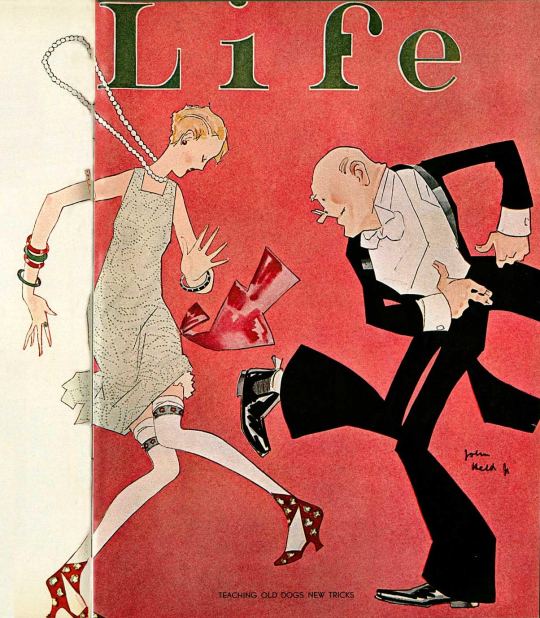

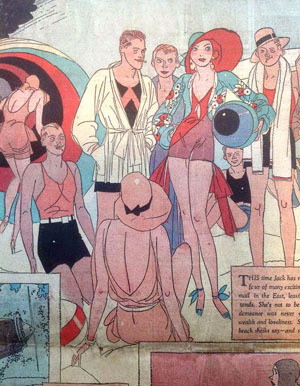
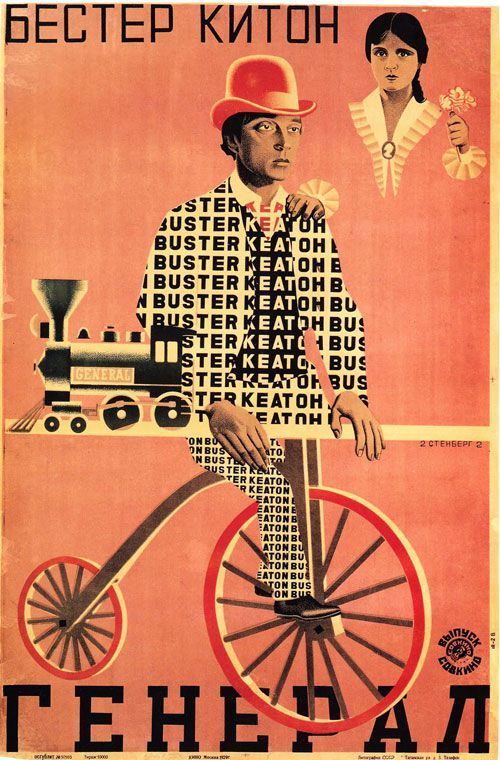
1920-1930
Last week we covered the first world war pretty extensively, and the effect it had on design and illustration. But the art inspired directly by the war itself may not be the most prolific, or important that spawned from it. Following the end of the first world war, the world, and more specifically, North America, endured a decade of peace, prosperity, as well as great social change. Soldiers returned confidently to their homes and families, the economy was booming, as workers returned to their careers and trades. Education became more common and less lucrative. Woman were given the right to vote, and began injecting themselves into careers in which they historically had no access to.
The generation born from this age of peace brought new culture, and social upheaval to their Victorian-era parents. They dressed and danced and behaved provocatively, they gained a liberal sense of freedom. And because of this change, advertising, design, and entertainment industries began to cater toward them.
The economy also boomed during this time, people had access to more things of higher value, and people who were considered poor or disadvantaged prior to the war, now were defined solidly as middle class. Naturally, the rich during this time, only became richer. This created a high demand for finer things, luxury clothes, catalogs, automobiles, and real estate. Many of the token “fancy” objects we know of today were imprinted in our cultural consciousness during this time of wealth.
The art and illustration reflected this sense of superiority. Artists and designers sought to capture a sense of liveliness, joy, fun and lavishness in their work. Designers worked with advertisers to make ads and magazines that would draw peoples attention. Strong, bold colours and geometric forms, departing from realistic expectations, and drawing more into the idealistic fantasy of consumers. The trend of moving away from realism and true portrayal was strengthened during this time. People began to be romantic again, and were more interested in life and beauty, rather than the dreariness of the past.
Luxurious colors were began used again, gold trims, bright, primary hues and strong outlines characterized the style. Women became a primary focus of art again, like Art Nouveau in the early 1900's. Idealized women were seen as a symbol of life, luxury, fashion and beauty. Which perfectly encompassed this time period.
Advertising agencies became fundamental in setting cultural trends and sought after styles. What people wore, what they liked, were all in some way, influenced by advertisement. By extension then, magazines and design played an integral role in the fashion of the 20's.
Because of this overwhelming opportunity for publications and advertisers to make ludicrous amounts of money, it would make sense that graphic designers, as well as illustrators, began raking in the dough as well. They began to make much more money, and became considered a serious and high class profession. Unfortunately this isn't really the case anymore (seriously).
http://www.illustrationhistory.org/history/time-periods/the-decade-1920-1930
http://www.brynmawr.edu/cities/archx/05-600/proj/p2/npk/historydeco.htm
http://www.1920-30.com/art/
2 notes
·
View notes
Photo




1910-1920
Last week we touched on how cultural phenomenon and circumstances can heavily effect the art and design that emerges, this decade is no different, perhaps even more so than Art Nouveau. A particularly massive and globally inclusive event occurred in this decade, the beginning, and the end, of the first world war.
Lots of art emerged during this time, most of it a conscious and unsubtle protest against the crimes and atrocities committed. However this isn't about art, this is about design and illustration, and as I asserted last week, they aren't exactly interchangeable.
The advent of cheap and easily functioning print created a new and expanding industry across the globe at the start of the decade. In addition to this, transportation and shipment had advanced significantly since the 1800's. With these two factors combined, large companies as well as small towns now had an access to printed paraphernalia that they never had before.
With wider and more efficient distribution networks, illustrated periodicals and illustrated books were enjoyed by millions of people as affordable entertainment. News, magazines, periodicals, fashion catalogs, children's books, literary journals, political journals, humor, and comics. This advancement brought the art of illustration into daily life.
Because print had become less of a luxury, this created a butterfly effect sort of thing. The paradigm in the U.S. Is that if something is accessible, a less accessible version should be made for people who can afford it, and for people who can't, to adore it. This created a higher demand for designers and illustrators alike, in the enterprise of “luxury books” and were typically lavish and decorative books with excessive illustration.
When the first World War came in 1914, every industry in the world was effected in some way. Surely even graphic designers were among the conscription. However historically, they played a larger part, and have a greater legacy than mere fighters in the war. Important figures such as James Montgomery Flagg, and contemporary Harvey Dunn were important figures during the war for their efforts in propaganda, advertisement, and raising awareness and support in the form of design.
On the forefront of this revolution, Illustration played a large role in poster design and advertisement. In the decade before, magazine illustrations and posters were far more nuanced and subtle than that of the great war's. They served in catching attention, but also were meant to be art in their own right, as they were typically done by branching artists
With the advent of illustration as a career, posters and ad's became far more cynical in their execution, and lost much pretense in what they conveyed. For example, one of the above photos, James Montgomery Flagg's “Uncle Sam” shows this style. Their ceases to be decoration in the design, or ornamentation. It has one goal, to be NOTICED, and it succeeded in that. It uses bold type and a bright, dynamic, singular image to not detract at all from its purpose.
This isn't important for this decade alone, it's important to understand the significance of this poster as a historical hallmark in design and especially illustration. It showcases one of the first ventures out of tradition and into pragmatic design, which is the staple of modern design, and the first rule we look to when considering if our work is effective or not.
Many illustrators followed this path, its influence can even be seen today, in “flat designs” and less detailed artwork. This style and expansion of illustration as a career during post war peace times will be next week's topic.
Sources:
http://www.illustrationhistory.org/history/time-periods/the-decade-1910-1920
http://www.ww1propaganda.com/
https://www.pinterest.com/mikecatalonian/1920s-illustration-magazines-posters-advertising/
1 note
·
View note

